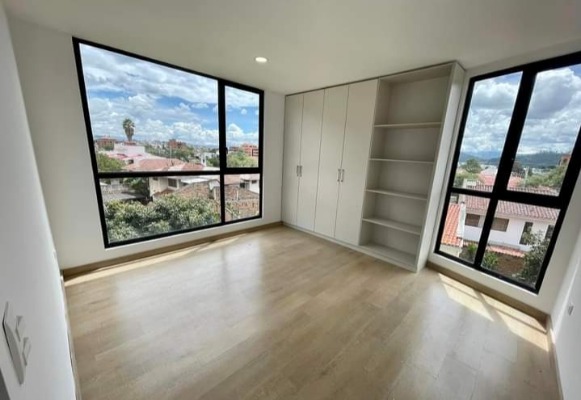Quito architects integrate shipping containers into modern housing
By Lloyd Alter
I’ve often been skeptical about shipping container housing; the boxes were designed for freight, not people. (See Does shipping container architecture make sense) However the RDP House, near Quito, by Daniel Moreno Flores + Sebastian Calero just popped up on Popup City and it shows shipping containers used in a different way from most projects.
On ArchDaily, the architects explain that the client was fascinated by mechanics. “Constructive solutions had to be visible, no matter their manufacture. When we understood this direct connection to metal, the idea and the desire to live in a container house appeared.”
The architects didn’t saw the sides off the containers and try and turn them into bigger rooms, but used them as boxes in their natural state to enclose functions that fit: storage rooms, bathrooms, closets and kitchen. They sandblasted them down to the metal on the outside and painted the insides white. One lives among the containers, not inside them.

Exterior view. (Lorena Darquea Schettini)
The architects expose everything; forty years ago this was a style, “high tech” where designers let all the electrical conduit and plumbing hang out there in the open. The bathroom would have been right at home in a 70s loft conversion.

The bathroom.
The house is supposed to be demountable, but the ceilings and roofs are poured concrete, which is not exactly portable. It is also supposed to be energy saving, but there is not a drop of insulation and the walls are all glass so we won’t go there. (Quito has a very temperate climate, almost dead on the equator with an average low of 50°F and average high of 70°F all year round so this isn’t a huge issue)- they are really talking about the energy saved by using the shipping containers:
“One of the main reasons to experiment with this material was the energy saving. These objects become waste after their life cycle (there are so many in the world that it becomes a problem). When changing their function and making them habitable, not only are we giving them a new use but we are also building in a clean manner. Design wise we worked towards simplification using only the necessary pieces.
I could go all TreeHugger and complain about the lack of insulation, the fallacy of saving energy by using shipping containers and then sticking a heavy concrete and steel roof on top, the silliness of the container loft sitting on the roof that has no insulation and will probably be uninhabitable when the sun shines, but then you can only get to it via a folding ladder so it is really there just for form and fun.
But in the end it doesn’t pretend that you can actually live in shipping containers. Except for the kitchen it leaves them pretty much intact. Instead it makes them part of an ingenious contrivance, a high tech machine for living. Is it green or sustainable or should it be on TreeHugger? No, but hey, the containers are recycled.
Visit ArchDaily for lots more photos and an amazing walkthrough that you can do in 3D if you have the goggles.
__________________
Credit: Tree Hugger, www.treehugger.com























